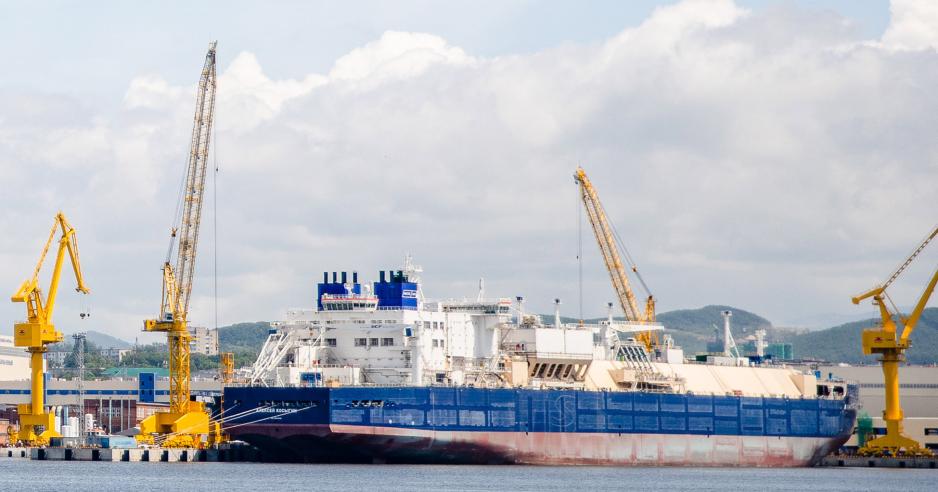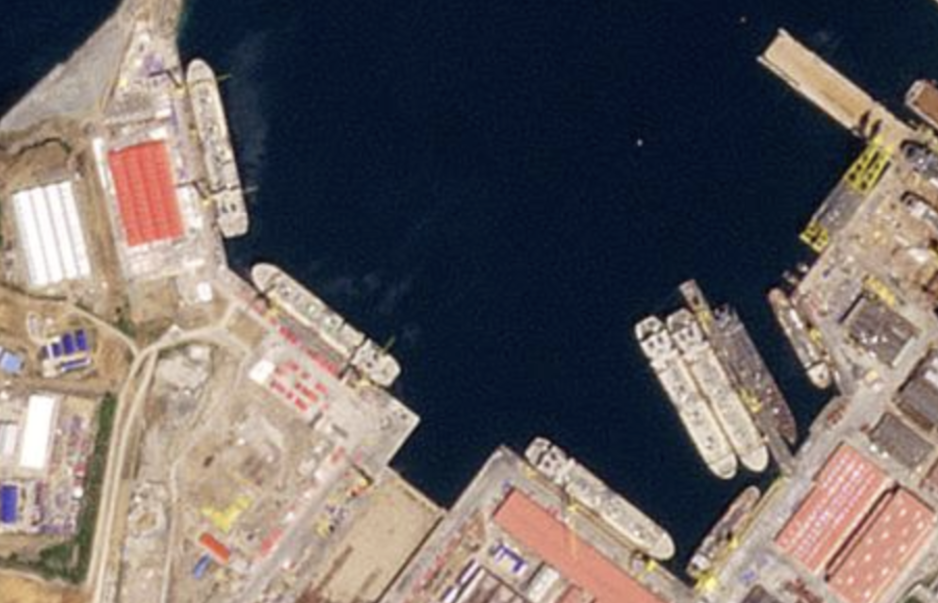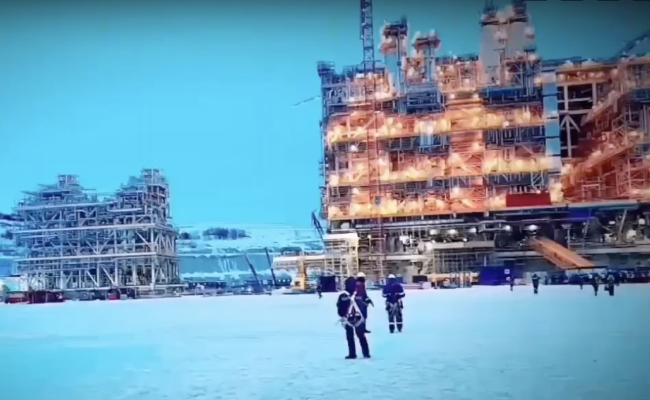Russian Shipyard To Deliver Critically Needed Arc7 LNG Carriers for Arctic LNG 2

Arc7 LNG carrier Alexey Kosygin at the Zvezda shipyard. (Source: Zvezda)
Novatek’s Arctic LNG 2 plant has now been sitting idle for nearly six months as Novatek has yet to receive any ice-capable LNG carriers for the project. The first two of five Arc7 vessels under construction at a Russian shipyard could become available later this year and begin LNG exports from the facility.
Russian shipyard Zvezda looks set to throw Novatek’s Arctic LNG 2 project a lifeline later in the year. Novatek is Russia's second-largest natural gas producer.
After sending up to 200 engineers and workers to the Far East facility, the shipyard will be able to complete at least two Arc7 LNG carriers by the end of 2024 and early 2025.
With two ice-capable vessels Novatek will be able to export approximately 2 million tons of liquefied natural gas (LNG) annually, around 30 percent of the first production line’s capacity. During summer and fall it will likely supplement transport capacity with lower ice-class or conventional LNG tankers.
Novatek could also elect to make use of two floating storage barges (FSUs) already positioned at either end of the route to shorten the distance the Arc7 would have to travel. FSU Saam and Koryak were towed to bays near Murmansk and in Kamchatka last year. With this logistics scheme, experts say, the company may be able to carry close to the design capacity of Train 1 even with just two Arc7 LNG vessels.
Both FSUs have been sanctioned by the U.S. and as a result remain unused thus far. Novatek can not use the barges to transship product from the thus far unsanctioned Yamal LNG project without risking alienating buyers or triggering secondary sanctions.
But with Arctic LNG 2 already under restrictions the use of the FSUs appears feasible. Since other elements of the logistics chain are already sanctioned, adding another blocked element in the form of the FSUs has little overall impact on the marketability of the LNG.
Receiving two vessels from Zvezda temporarily eases Novatek’s transport challenges following the blocking of vessels at South Korean Hanwha Ocean shipyard. Following U.S. sanctions earlier this year the builder has been unable to transfer three completed vessels to Novatek. A further three destined for Japanese MOL shipping to also service the Arctic LNG 2 project also remain marred by uncertainty.
Once the facility’s second train becomes operational next year it will have to acquire additional ice-capable vessels to ensure year-round transport capacity.

May 25, 2024 satellite image showing five launched Arc7 LNG carriers at the Zvezda yard. (Source: Planet.com)
Zvezda Shipyard is home to three additional Arc7 vessels whose status remains uncertain. French LNG technology firm Gaztransport & Technigaz (GTT) departed from Russia before completing its work on the vessels. Reporting has long suggested that the company had been able to conclude the LNG containment system on two or three vessels.
Novatek also appears bound to make use of a host of conventional LNG carriers to finally begin exporting LNG from its latest project as soon as ice conditions permit.
Russia’s Northern Sea Route Administration has registered a record-number of permit requests from non-ice class LNG tankers. These vessels will be allowed to navigate the Western reaches of the Northern Sea Route where the Arctic LNG 2 is located, between July 1 and October 31.
Through the end of May the Administration had issued permits to six conventional LNG tankers and four carriers with light ice-classes. Further vessels will likely follow.



